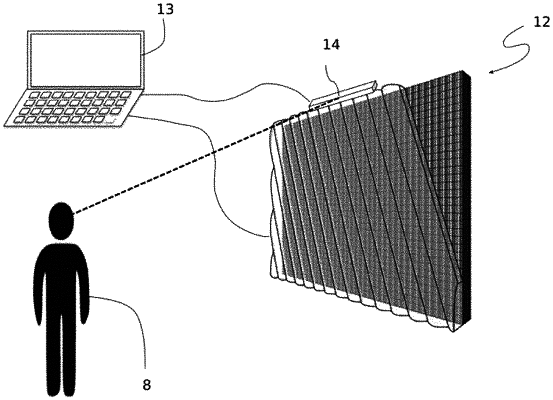| CPC H04N 13/305 (2018.05) [H04N 13/31 (2018.05); H04N 13/324 (2018.05); H04N 13/351 (2018.05); H04N 13/366 (2018.05)] | 15 Claims |

|
1. An autostereoscopic display screen with P points-of-view, called screen points-of-view, P being an integer greater than or equal to 6, intended to display an autostereoscopic image at I points-of-view, called image points-of-view, I being an integer greater than or equal to 2, less than or equal to P/3, preferably equal to 2, said screen comprising:
a matrix of pixels arranged by rows and by columns, each pixel being composed of a plurality of sub-pixels of different colors, each intended to display a sub-pixel of one of the image points-of-view,
an array of cylindrical lenticules or a parallax barrier, called an optical array, configured to allow the projection of pairs of predetermined points-of-view of the screen towards the eyes of an observer located at a nominal distance of 1 screen, called flat tint distance,
said screen being characterized in that said optical array is configured so that the P points-of-view of the screen can be perceived successively in a direction, called horizontal direction, by said observer at said flat tint distance, in spaces in front of the screen, called lobes, each covering I times the average inter-pupillary distance of an observer, and so that the screen points-of-view of each pair of visible points-of-view by the observer at the flat tint distance, are separated by at least T points-of-view, called buffer points-of-view, T being greater than or equal to 2, so that it is possible to display successively for each lobe, each of the I image points-of-view, each repeated P/I times, and that each point-of-view visible to the observer at the flat tint distance can be surrounded by at least 2 buffer points-of-view each displaying this same image viewpoint.
|